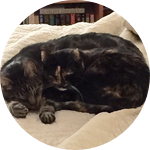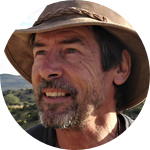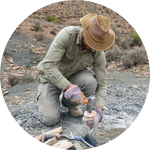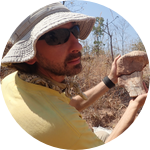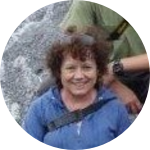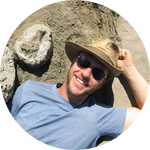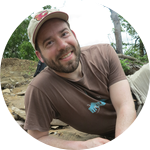About This Project
For palaeontologists, the South African Karoo is legendary, not only for its appealing wilderness, but mostly because of its great fossil discoveries. A 200 million year old skull or skeleton can pop up below every single step you make! Although vertebrate fossils have been known in the Karoo for more than a century, its exploration is far from complete and new species are discovered on almost every expedition. This project aims to explore the oldest terrestrial deposits of the Karoo.
Ask the Scientists
Join The DiscussionWhat is the context of this research?
Because of its relative abundance of fossils, the South African Karoo serves as a basis for dating rocks of Permian and Triassic age worldwide.
It is also the only place in the world that documents the ecological effects of three mass extinctions: the end-Guadalupian (260 ma), Permo-Triassic (252 ma) and end-Triassic (201 ma ) extinctions.
Also the Karoo documents one of the earliest terrestrial ecosystems and hosts the most distant ancestors of tortoises, dinosaurs and mammals. Indeed the Karoo is internationally famous for its superb record of therapsid fossils which chronicle, in remarkable detail, the ancient origins of mammals.
All these make Karoo palaeontology crucial for understanding the origin of modern biodiversity and the ongoing 6th mass extinction.
What is the significance of this project?
We will prospect the oldest terrestrial deposits of the Karoo to elucidate life on land during the middle Permian. While the most iconic Karoo fossil taxa (dicynodonts, gorgonopsians, dinocephalians) are well documented in more recent parts of the basin, the fauna in the lower stratigraphic levels remains unexplored.
Our project focuses on exploration of this ancient neglected fauna through fieldwork to collect fossils and describe new species, study the geology to understand environmental change, and discover volcanic ashes for zircon dating.
The project has the potential to re-write the early evolutionary history of many important animal groups, study the most ancient terrestrial ecosystem in the southern hemisphere, and understand the causes of the Guadalupian extinction.
What are the goals of the project?
We wish to bring a team of 8 researchers and students from around the world to the oldest rocks of the South African Karoo, in the districts of Merweville, Sutherland and Beaufort West, to prospect for fossils. The fieldtrip will take place at the beginning of 2020 and will run for 14 days. The aim is to find fossils from lower down in the stratigraphy, identify them, determine their exact stratigraphic position, and understand middle Permian biodiversity on land. Exact zircon dating on volcanic ashes will help constrain the age of these horizons and enable faunal comparison with similar-aged deposits around the globe. South African students will be trained to field techniques relating to Karoo palaeontology and its heritage to ensure the future of the discipline in the country.
Budget
Exploratory fieldwork is time-intensive, and collecting high-quality data requires a continuity of research funding and focus. Fieldwork is the cornerstone of exploration and the starting point of our endeavour. This fieldwork will provide the raw material (fossils and volcanic ashes) for our research.
Palaeontological, geological, sedimentological and stratigraphic fieldwork requires time in the field to prospect for fossils, record lithological characteristics, sample rocks for petrographic and geochemical analysis, and collect volcanic ashes and sandstones for zircon dating purposes.
This project is critical to our larger project of understanding biodiversity change on land during the Middle Permian period and the effects of the end Capitanian extinction 260 million years ago.
Endorsed by
 Project Timeline
Project Timeline
The fieldtrip will take place around February-March 2020.
Preparation of the fossils will take about a year, but this excursion will result in 1 paper by June 2021. This trip will likely deliver new species of animals which will be described as soon as they are prepared, by June 2022.
Updates will be posted on the Evolutionary Studies Institute page (https://www.facebook.com/esifo...) and COE in palaeosciences pages (https://www.facebook.com/coepa... and https://twitter.com/CoE_Palaeo).
Mar 08, 2019
Project Launched
Feb 22, 2020
Fieldtrip
Jun 20, 2021
Publication of the first results
Jun 20, 2022
New species description
Meet the Team
Bruce S. Rubidge
Professsor Bruce Rubidge is the Director of the National Centre of Excellence for Palaeosciences in South Africa. He earned his PhD in geology and palaeontology. He has ongoing scientific collaborations with scientists from numerous countries, his research interests are broad and he has a passion to understand the most distant origins of mammals and unravelling middle Permian ecosystems.
Project Backers
- 142Backers
- 109%Funded
- $8,535Total Donations
- $60.11Average Donation
